Peyman Givi
Modeling Continuous Spatial-temporal Dynamics of Turbulent Flow with Test-time Refinement
Dec 27, 2024



Abstract:The precise simulation of turbulent flows holds immense significance across various scientific and engineering domains, including climate science, freshwater science, and energy-efficient manufacturing. Within the realm of simulating turbulent flows, large eddy simulation (LES) has emerged as a prevalent alternative to direct numerical simulation (DNS), offering computational efficiency. However, LES cannot accurately capture the full spectrum of turbulent transport scales and is present only at a lower spatial resolution. Reconstructing high-fidelity DNS data from the lower-resolution LES data is essential for numerous applications, but it poses significant challenges to existing super-resolution techniques, primarily due to the complex spatio-temporal nature of turbulent flows. This paper proposes a novel flow reconstruction approach that leverages physical knowledge to model flow dynamics. Different from traditional super-resolution techniques, the proposed approach uses LES data only in the testing phase through a degradation-based refinement approach to enforce physical constraints and mitigate cumulative reconstruction errors over time. Furthermore, a feature sampling strategy is developed to enable flow data reconstruction across different resolutions. The results on two distinct sets of turbulent flow data indicate the effectiveness of the proposed method in reconstructing high-resolution DNS data, preserving the inherent physical attributes of flow transport, and achieving DNS reconstruction at different resolutions.
Physics-enhanced Neural Operator for Simulating Turbulent Transport
May 31, 2024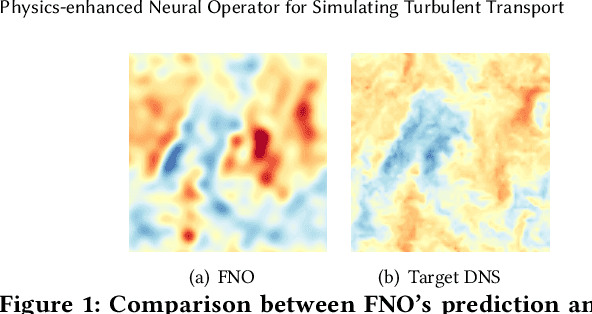
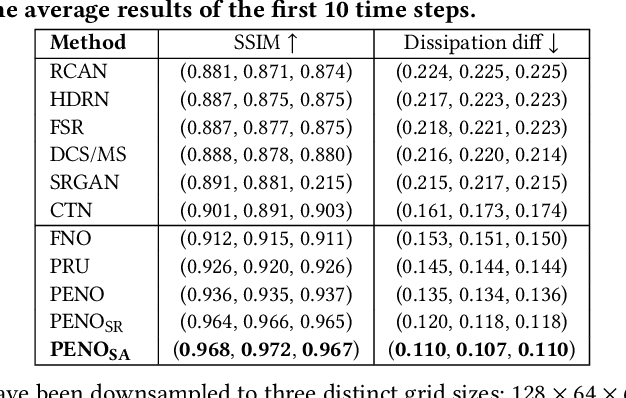
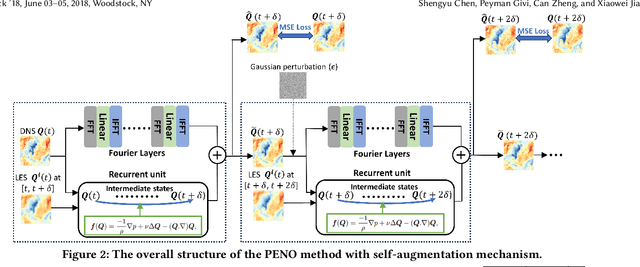
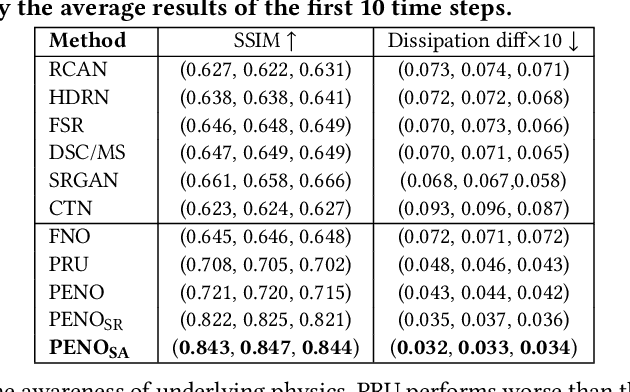
Abstract:The precise simulation of turbulent flows is of immense importance in a variety of scientific and engineering fields, including climate science, freshwater science, and the development of energy-efficient manufacturing processes. Within the realm of turbulent flow simulation, direct numerical simulation (DNS) is widely considered to be the most reliable approach, but it is prohibitively expensive for long-term simulation at fine spatial scales. Given the pressing need for efficient simulation, there is an increasing interest in building machine learning models for turbulence, either by reconstructing DNS from alternative low-fidelity simulations or by predicting DNS based on the patterns learned from historical data. However, standard machine learning techniques remain limited in capturing complex spatio-temporal characteristics of turbulent flows, resulting in limited performance and generalizability. This paper presents a novel physics-enhanced neural operator (PENO) that incorporates physical knowledge of partial differential equations (PDEs) to accurately model flow dynamics. The model is further refined by a self-augmentation mechanism to reduce the accumulated error in long-term simulations. The proposed method is evaluated through its performance on two distinct sets of 3D turbulent flow data, showcasing the model's capability to reconstruct high-resolution DNS data, maintain the inherent physical properties of flow transport, and generate flow simulations across various resolutions. Additionally, experimental results on multiple 2D vorticity flow series, generated by different PDEs, highlight the transferability and generalizability of the proposed method. This confirms its applicability to a wide range of real-world scenarios in which extensive simulations are needed under diverse settings.
Reconstructing Turbulent Flows Using Physics-Aware Spatio-Temporal Dynamics and Test-Time Refinement
Apr 24, 2023Abstract:Simulating turbulence is critical for many societally important applications in aerospace engineering, environmental science, the energy industry, and biomedicine. Large eddy simulation (LES) has been widely used as an alternative to direct numerical simulation (DNS) for simulating turbulent flows due to its reduced computational cost. However, LES is unable to capture all of the scales of turbulent transport accurately. Reconstructing DNS from low-resolution LES is critical for many scientific and engineering disciplines, but it poses many challenges to existing super-resolution methods due to the spatio-temporal complexity of turbulent flows. In this work, we propose a new physics-guided neural network for reconstructing the sequential DNS from low-resolution LES data. The proposed method leverages the partial differential equation that underlies the flow dynamics in the design of spatio-temporal model architecture. A degradation-based refinement method is also developed to enforce physical constraints and further reduce the accumulated reconstruction errors over long periods. The results on two different types of turbulent flow data confirm the superiority of the proposed method in reconstructing the high-resolution DNS data and preserving the physical characteristics of flow transport.
Reconstructing High-resolution Turbulent Flows Using Physics-Guided Neural Networks
Sep 06, 2021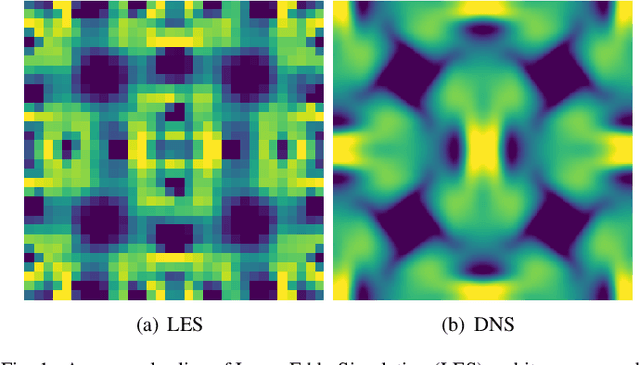
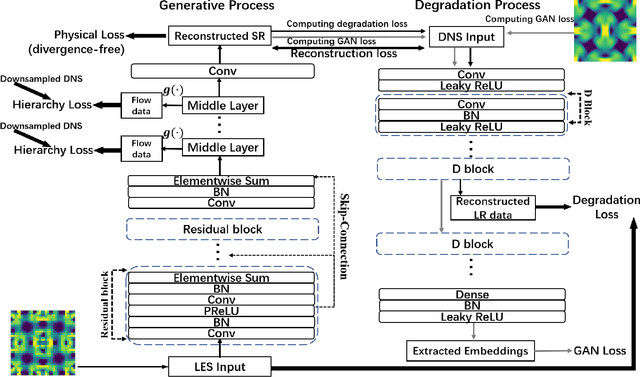
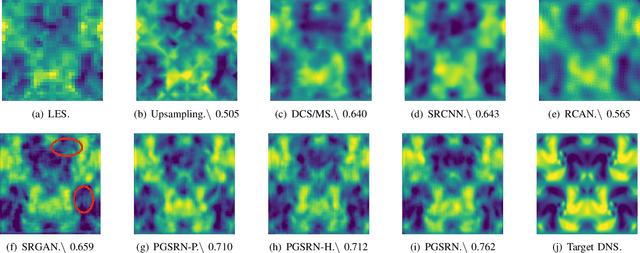

Abstract:Direct numerical simulation (DNS) of turbulent flows is computationally expensive and cannot be applied to flows with large Reynolds numbers. Large eddy simulation (LES) is an alternative that is computationally less demanding, but is unable to capture all of the scales of turbulent transport accurately. Our goal in this work is to build a new data-driven methodology based on super-resolution techniques to reconstruct DNS data from LES predictions. We leverage the underlying physical relationships to regularize the relationships amongst different physical variables. We also introduce a hierarchical generative process and a reverse degradation process to fully explore the correspondence between DNS and LES data. We demonstrate the effectiveness of our method through a single-snapshot experiment and a cross-time experiment. The results confirm that our method can better reconstruct high-resolution DNS data over space and over time in terms of pixel-wise reconstruction error and structural similarity. Visual comparisons show that our method performs much better in capturing fine-level flow dynamics.
 Add to Chrome
Add to Chrome Add to Firefox
Add to Firefox Add to Edge
Add to Edge